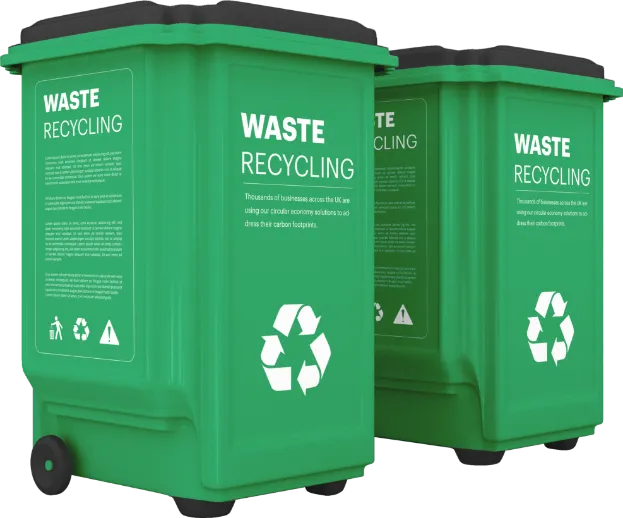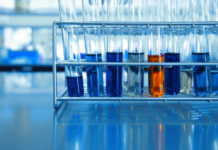The regulations defines biohazards waste as physically hazardous biological or medical wastes that due to their features could result in or significantly contribute to increasing mortality, or an increase in severe irreparable or incapacitating reversible illnesses or pose a major risk to human health or to the environment if improperly handled or stored or transported, then disposed of or managed in any other way.
The following kinds of offensive waste bin are defined and identified as physically hazardous or infectious biological or medical waste and are subject to the regulations of the 105 CMR 480.000:
Blood And Products From Blood
Get rid of bulk human blood and blood products that are in a liquid state that is draining; body fluids contaminated by visible blood, and also materials filled with blood.
Pathological Waste
Organs, anatomical human parts tissues, bodily fluids removed and destroyed during autopsy or surgery or other medical procedures along with their containers.
Stocks Of Cultures And Infectious Agents And Biologicals
All the discarded cultures and stock of infectious agents and related biologicals biotechnological effluents and biotechnological byproducts samples of labs for pathology and medical as well as stocks and cultures of infective agents from research labs and waste products from the manufacture of biologicals and waste, as well as live and attenuated vaccines destined for use by humans.
Animal Carcasses That Have Been Contaminated As Well As Body Parts And Bedding
The carcasses that have been contaminated as well as body bedding and parts of all animals used in research studies that have been found to have been subjected to pathogens.
Sharps
Discarded medical/research materials that could cause cuts or punctures. Such as but not limited the entire collection of used and discarded hypodermic needles and needles. Pasteur pipettes broken medical glassware Sharpeners for scalpel, razors that are disposable as well as suture needles.
Biotechnological By-Product Effluents From Biotechnological Processes
All discarded products made from genetically modified living organisms and their products. Medical or biological waste will be classified as “Waste” in the following regulations of CMR 480.000.
Biohazardous Waste
A proper disposal and handling of biohazardous waste is essential to protect personnel from infection (laboratory workers, custodians and lab visitors, etc.) and exposure to the environment. OSHA in addition to Commonwealth of Massachusetts regulations (105 CMR 480.000) requires that biohazardous wastes be appropriately identify, store and then dispose of.
Labelling Biohazardous Waste
At a minimum the hazardous waste that is dispose of is require to be label using the biohazard symbol universally use as well as the word “Biohazard. Additional information, like the kind of the waste (such as “sharps’ ‘ or “liquid waste”) and the origin of the waste is highly recommend.
Disposal And Handling Of Hazardous Waste
Sharps
Sharps are all syringes, scalpels, lancets and comparable medical devices (whether or not contamination-free) and the contaminated Pasteur pipettes broken glass, as well as any other tools or materials which can puncture or cut individuals.
The Sharps need to be keep in containers that are rigid, waterproof and impervious to punctures from sharps. The Sharps containers need to be design in a way that sharps can be securely introduce into the container, but are not quickly remove.
Containers should be either orange or red in colour, and marked by the standard biohazard symbol as well as the word Biohazard. If you find the container to be 3/4 full, employees should cover the offensive waste bag with a seal and then it will be collected by the custodian of the building facility or the appropriate service personnel.
Uncontaminated Laboratory Glassware Along With Broken Glass
Take clean laboratory glassware and broke glass in sturdy glass containers (separate from other garbage) which will avoid injuries to employees and cuts. Containers should be mark “broke glass.” Broken glass should be treat as normal garbage.
Solid Biohazardous Waste
Solid hazardous waste comprises the microbial agents, tissues and other contaminate materials (such as pipettes, petri dishes, glass that is contaminate, etc.). These substances are store in red biohazard bags which are double-line before being put into cardboard boxes.
Personnel must seal the trash container to be pick up by the custodian of the building or the appropriate service personnel. The room and building number must be write (a Sharpie or similar permanent marker if necessary) on the outside of the container to indicate its location.
CRC personnel must cover the waste container with a seal and then fill out a pickup form on the CRC website. The room and building number should be note (a Sharpie or similar permanent marker is acceptable) at the outside of the container to indicate the origin of the box.
A license service provider retrieves the waste from every building at pre-determine times to process the waste using an approve sterilisation procedure. These forms for tracking medical waste are keep by EHS.
Liquid Biohazardous Waste
Liquid biohazardous waste is comprise of all liquid and blood waste generate by animals or humans as well as all other hazardous liquid trash (such as microbial culture). Take liquid waste into the form of rigid, closeable containers that are leak-proof and marked using the symbol for biohazards that is universal, as well as the word “Biohazard”.
Blood of animals and humans as well as body fluids are dispose of directly into the toilet.
(Wear a lab jacket, glasses for safety, face shields, as well as gloves and take care to avoid splashes.)
All other liquid waste should be treat by autoclaving or disinfectant prior to disposal.
Liquid waste treat using small amounts of household bleaches or disinfectants may be flush directly into the sanitary sewer after a sufficient amount of time. Waste treat with liquids (alcohol for example) chemical disinfectants should be treat as hazardous chemical waste via EHS.
Animal Carcasses Parts of the Body, Bedding and Tissue
Animal carcasses and their parts regardless of their infection status are treat as biodegradable garbage.
All carcasses that are not preserve should be keep within a freezer or in a cold storage space prior to the disposal. Secure sharp protrusions and limbs to ensure they don’t puncture the bag.
Animal tissue and bedding are to be eliminated as an offensive waste collection when the animal that was the source of the waste was infected by a pathogen or more.
Animal waste that is take as biohazardous waste must be send to incineration through an authorise vendor who collects the waste from each structure at pre-determine times.
The yellow “pathological”, or ‘incinerate only’ label must be place on the biohazardous waste container in the event that it contains animal carcasses, components tissue, bedding, or tissues. Forms for tracking medical waste are administer by EHS.
Infectious & Non-Infectious Waste Disposal
Infectious Waste
When you are working with animal or human tissues blood, other bodily fluids, plants or animal pathogens and DNA recombinant, you are likely to produce infective waste.
This means that the offensive waste is (or possibly) affected and may cause illness, spread bacteria, viruses, and other items that can pose health risks. This is the case for labs in research that work with biological materials.
Non-Infectious Waste
It’s best to err on the safe side in the case of possibly hazardous materials. It’s also important to remember that not every waste that is generate is infect. The waste that isn’t any health risks is refer to as non-infectious waste.
This could include fluids, tissues, or any other biological substances that are believe to be uncontaminate. In certain environments like hospitals, prevention is the prefer method which is why all human waste is consider as potentially harmful.
Infectious Waste Disposal
Since offensive waste disposal is the risk of infection that needs to be properly remove. Sharps waste, including needles, syringes and scalpels, should be dispose of in a sharps box that is red.
This box has be specifically make to allow sharp objects to enter without the danger of getting stop.



















